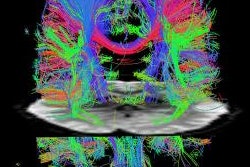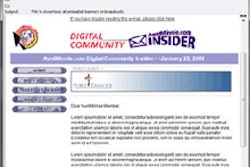
NEW YORK (Reuters Health) - In a prospective comparative study, 32-channel 3.0-tesla MRI and 64-slice CT angiography similarly identified significant coronary stenosis and similarly predicted revascularization in patients with suspected or known coronary artery disease (CAD).
However, CT angiography showed a favorable trend toward higher diagnostic performance and better prediction of subsequent revascularization, Dr. Ashraf Hamdan, of the German Heart Institute of Berlin and colleagues report in the January issue of JACC: Cardiovascular Imaging.
In an e-mail to Reuters Health, Dr. Hamdan noted that "the use of 3.0-tesla MRI and 32-element coils has allowed improvements of the spatial and temporal resolution of MRI coronary angiography. However, this technology had never been compared with 64-slice CT, which has higher spatial and temporal resolution than the older CT generations and therefore had a wide spectrum for clinical use."
In addition, until now, there's been no direct comparison of the ability of MRI and CT angiography to predict the need for revascularization.
In their paper, Dr. Hamdan and colleagues report results of 110 patients with stable or suspected CAD who underwent 32-channel 3.0-tesla MRI and 64-slice CT before elective x-ray angiography.
They compared the diagnostic accuracy of the two noninvasive modalities for detecting luminal stenosis of 50% or greater in diameter in segments 1.5 millimeters in diameter, using quantitative invasive coronary angiography as the reference standard.
The clinicians report that all cases of left main or 3-vessel disease (2 and 11 patients, respectively) were correctly identified by MRI and CT angiography. The diagnostic accuracy of MRI and CT was 83% and 87%, respectively; sensitivity was 87% and 90%; and specificity 77% and 83%, respectively.
The diagnostic accuracy of MRI and CT angiography was also similar on a per-vessel basis, with no significant differences among the right and left-main left anterior descending arteries. CT, however, had significantly higher diagnostic accuracy for the intermediate branch left circumflex coronary artery, the clinicians say.
Both techniques were similarly able to identify patients who subsequently underwent revascularization. However, invasive angiography predicted coronary revascularization significantly better than MRI and CT, the authors point out.
Dr. Hamdan noted that the results of this study can't be extrapolated to the relatively older MRI generations and coils.
For now, he offered the following guidance. In centers that have the ability to perform 32-channel 3.0-tesla MRI and 64-slice CT coronary angiography, "MRI should be performed in patients with renal failure (absence of iodinated contrast agent); patients who need additional functional information (stress testing, left or right ventricular volumes and functions); or repeated coronary angiography (absence of radiation exposure)."
Dr. Hamdan added, CT coronary angiography "should be used in patients with claustrophobia and in patients with bimetallic implants. In addition, patients after coronary artery stenting with a stent diameter of greater than 3 millimeters might be evaluated using CT but not using MRI."
The authors of an accompanying editorial look forward to future prospective studies, which are currently enrolling patients, that will assess the value of these modalities in a more comprehensive fashion against clinical outcomes.
By Megan Brooks
Source: http://bit.ly/hS1MNg
J Am Coll Cardiol Img 2011;4:50-61.
Last Updated: 2011-01-10 16:32:27 -0400 (Reuters Health)
Related Reading
MI is visible on nongated chest CT, but often missed, December 29, 2010
Long after complicated pregnancy, maternal cardiac problems develop, December 22, 2010
Patients with suspected CAD and normal cardiac CT can 'sleep easy,' December 9, 2010
Simple calcium counting at chest CT predicts mortality risk, November 24, 2010
New cardiac CT guidelines expand use for low-risk patients, November 1, 2010
Copyright © 2011 Reuters Limited. All rights reserved. Republication or redistribution of Reuters content, including by framing or similar means, is expressly prohibited without the prior written consent of Reuters. Reuters shall not be liable for any errors or delays in the content, or for any actions taken in reliance thereon. Reuters and the Reuters sphere logo are registered trademarks and trademarks of the Reuters group of companies around the world.



















